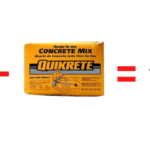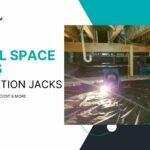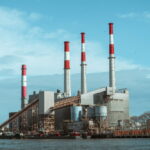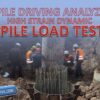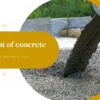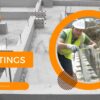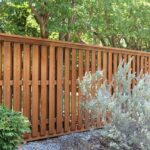When you’re looking to repair your foundation or for underpinning – two of the obvious choices are helical piers and push piers. So, how will you comment on push piers vs. helical piers?
Push pier, as the name implies, is mounted on the foundation to be repaired and is literally pushed into the soil to competent load-bearing strata under the load of the house. On the other hand, a helical pier is like a screw. It has helices welded to the end of the steel that allows it to be screwed directly into the earth via hydraulic drive head.
Let’s now elaborate the above difference between push piers and helical piers in the text below:

Helical pier and Push piers – your choices to rectify settling foundations
There is a lot of debate among homeowners about what to pick between pushes piers and helical piers while having a settling foundation. Most of the homeowners are even confused about the working and their basic differences.
So, to get things clear, we have to go through the basics of these structures and the purpose they serve.
Also Read: What are push piers? Here’s how push piers work?
Many of you have probably heard the term ‘pier’ – an upright vertical member constructed of concrete, steel, or wood that supports loads.
Looking at it with technical aspect, a pier is a vertical load bearing member that transfers loads from superstructure (structure above ground) to a firm strata below the ground.
Push piers and helical piers are types of piers used to prevent foundation settlement and foundation repair (if it has already settled). So, both the piers offer stability to the structure thereby adding to the structural capacity of a building.
What does it mean to have a settling foundation?
Now to a layman, settlement might be something he has never heard of or at least he does not know when to tell the house is settling.
Few of the common indications are hairline cracks in plaster, sticking doors and windows, cracks in foundations, and plumbing with mechanically equipment being affected.
However, few of these conditions or all these conditions may also occur due to other problems. Therefore, it is advisable to seek the help of an expert before jumping to a conclusion.
The use of a particular type of pier depends on various conditions and factors. One significant aspect we discussed above is the type of pier and its suitability in a particular condition. Other factors are installation techniques, type of building, scale of work, level of damage, and cost.
Also read: What is a Pier and Beam Foundation? – Cost, Pros & Cons
Difference – Push Piers vs. Helical Piers
Push piers resemble a nail while helical piers resemble a screw. This is the basic difference around which all concepts related to both piers may easily revolve. We all know that a nail requires hammering action i.e. weight of the hammer repeatedly striking to fix the nail in place. A screw on the other hand needs torque action to drive into place. Keeping this concept in mind we will unbundle things further.
Push piers
Push piers rely largely on the inherent weight of a structure to drive them to a firm and reliable strata below the ground (we call it the competent soil).
These piers are pushed downward by the weight of the structure until they reach bedrock or other strong load bearing strata. Therefore, Push piers are particularly well-suited for heavy structures which carry large weight. However, these piers will go only as deep as the weight of the house. Anyhow, there’re still temporary measures you can take to increase the depth.
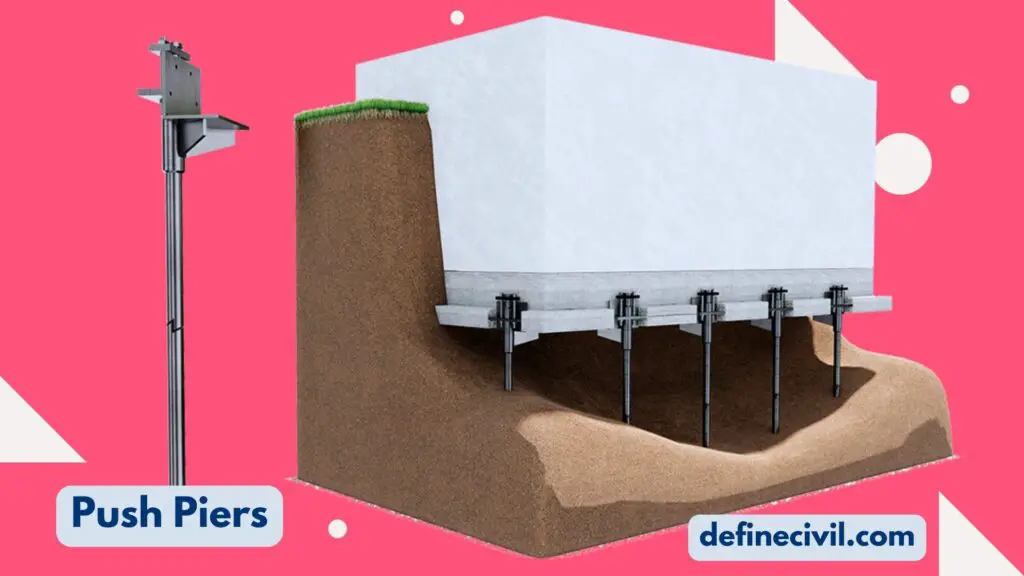
Helical Piers
Helical piers are suitable for structures that are light weight. Its installation depends a lot on the weight of your house. We drive it by applying torque head and you can go as deep as you require finding a suitable load bearing strata.
On the basis of shape, we can categorize helical piers as: square helical piers and round or circular helical piers.
Now, the type of loads acting on the piers is same as that of the footing. It includes compression and lateral forces. Compression forces act vertically and tend to push the piers downward. The other one is lateral load that causes the piers to sway sideways.
For compression load, round piers are suitable whereas for lateral load square piers are useful.

Installation
So, you see push piers utilize the weight of your house to go deep in the hard soil. A hydraulic press works to drive piers into the earth. These piers are installed with a collar that helps to reduce skin friction and assist downward movement. Furthermore, a bracket is mounted around the broken portion of footing to force these piers down.
For installing helical piers, we use the helices to drive it like a nail into the soil. Whether you use circular or square piers, it must have helices at the tip. The hydraulic drive head helps in driving the pier and pushing it down. Once down, the pier helps the house’s foundation by allowing firm support.
It is important to mention here that you should always go for galvanized piers. You must ask your contractor to work with galvanized piers. This prevents corrosion of piers that ensures the serviceability and adds to the efficiency.
Equipment Used
So, how do you install a nail in comparison to inserting a screw? You can’t use a screw-driver to push the nail in that wall, don’t you? The same works here between helical and push piers.
As discussed earlier, the structure of both piers is different from each other that mean both utilize different equipment and installation techniques.
Push piers require a hydraulic power pack connected to a hydraulic cylinder (in underpinning terms we call it the RAM). This RAM goes along your foundation along with the repair bracket mounted on the top of the footing.
Helical piers also utilize this arrangement. The hydraulic power pack powers the hydraulic head that starts installing helical piers.
Cost
Generally, push piers and helical piers costs around $2000 to $3000 per pier location. There’s not much difference in terms of cost for both push and helical piers. However, in some locations helical piers are bit costlier than push piers.
Your contractor will perform thorough examination and give you the number of pier locations required for your house. Also, helical piers cost more because more manpower is needed as compared to push piers. That’s because of the additional labor requirement for helical pier installation. Push pier just needs single person to install but that’s not the case with helical pier.

Load Carrying Capacity
Load carrying capacity of push piers is around 67-68 kips (67-68,000 lbs). Whereas, the helical piers have load capacity of around 74-75 kips (74-75,000 lbs).
Summary
| Push Piers | Helical Piers | |
| Suitable for (Application) | Heavy load buildings or structures | Light weight buildings of structures |
| Cost | $2,100 to $2,500. | $2,100 to $3,000 |
| Lifting Capacity | 68 thousand pounds. | 74 thousand pounds. |
| Installation | by the hydraulic press. | Driven by helices or flights welded to the bottom of the steel |
| Equipment | utilize a hydraulic power pack connected to a hydraulic cylinder | a hydraulic power pack or a hydraulic power pack |
| Crew requirement | Can be done by 1 person | Need 3 to 4 person for installation |


